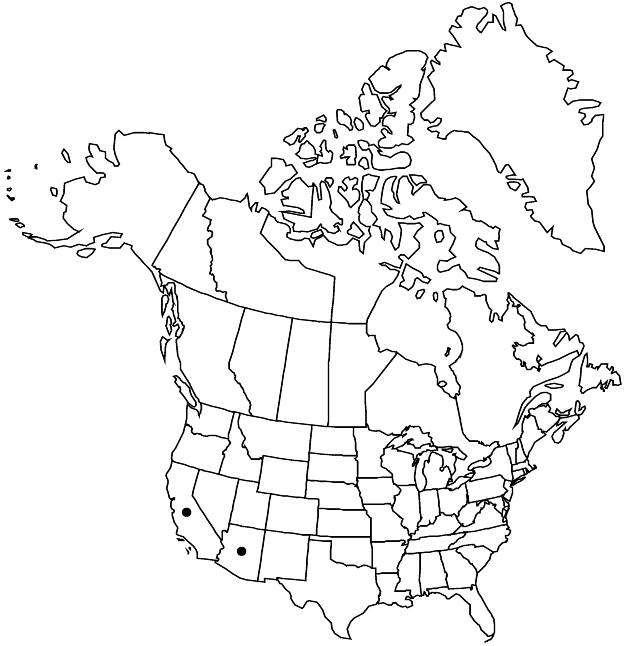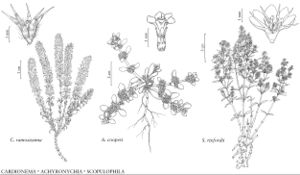Difference between revisions of "Achyronychia cooperi"
Proc. Amer. Acad. Arts 7: 331. 1868.
Treatment appears in FNA Volume 5. Treatment on page 47.
FNA>Volume Importer |
FNA>Volume Importer |
||
| Line 46: | Line 46: | ||
|publication year=1868 | |publication year=1868 | ||
|special status= | |special status= | ||
| − | |source xml=https://jpend@bitbucket.org/aafc-mbb/fna-data-curation.git/src/ | + | |source xml=https://jpend@bitbucket.org/aafc-mbb/fna-data-curation.git/src/f6b125a955440c0872999024f038d74684f65921/coarse_grained_fna_xml/V5/V5_93.xml |
|subfamily=Caryophyllaceae subfam. Paronychioideae | |subfamily=Caryophyllaceae subfam. Paronychioideae | ||
|genus=Achyronychia | |genus=Achyronychia | ||
Revision as of 20:10, 24 September 2019
Stems 3–17 cm, mostly glabrous. Leaves pairs unequal; stipules 0.1–0.4 mm; blade 3–20 mm. Inflorescences 20–60+-flowered. Flowers: perianth 2.5–3 mm; hypanthium green, becoming brown and hard, 10-ribbed distally; sepals erect to spreading, concave, central portion green, fleshy, white, scarious portion forming an ovate to orbiculate apex, 1–1.3+ mm wide, becoming deciduous with age; staminodes ca. 0.5 mm. Seeds 0.9–1.1 mm.
Phenology: Flowering spring.
Habitat: Dry, sandy areas, sand dunes, desert washes
Elevation: 50-700 m
Distribution

Ariz., Calif., Mexico.
Discussion
Selected References
None.
Lower Taxa
None.
